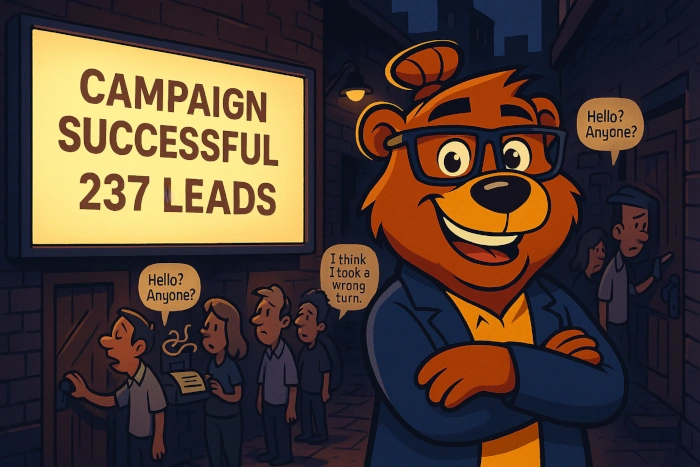You fixed the targeting. Tightened the creative. Dialed in the offer.
And the numbers prove it’s working.
But the client?
Still frustrated.
“The leads feel cold.”
“We’re not getting bookings.”
“Something’s off.”
So the ad — the one part that is doing its job — gets blamed. Again.
Sound familiar?
This isn’t a post about defending your work. You don’t need help with that.
It’s about noticing where things actually break down:
Right after the click.
That’s where the cracks start showing — slow pages, missed confirmations, ghosted follow-ups.
The part your client pieced together with good intentions… and then never finished.
And when that stuff drops the ball? Even your best campaigns start to look shaky.
Not because the ad failed, but because everything after it never showed up.
That is… draining.
So in this post, I want to walk through the parts of the funnel no one talks about — and what happened when we stopped holding it together with string and hope, and started building marketing that could stand on its own.
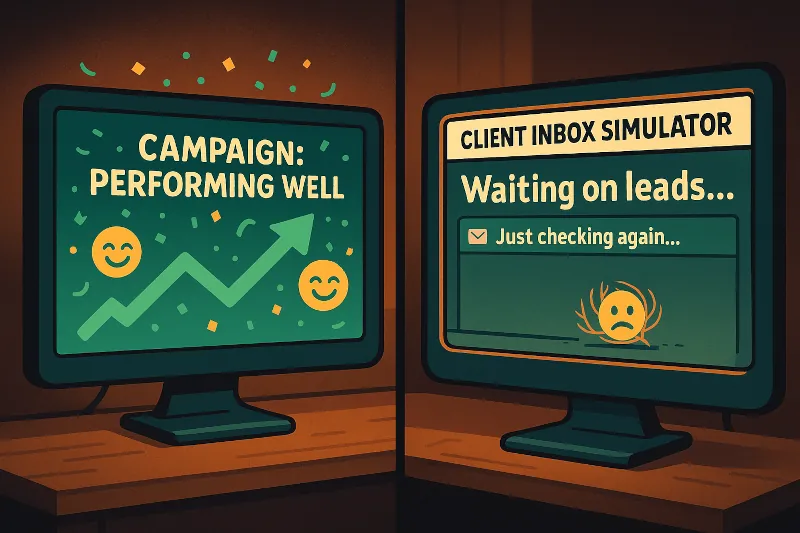
The part of the funnel no one owns (but everyone blames)
You can build a great ad strategy — sharp creative, solid messaging, clear audience — and still feel like you’re losing.
Because running ads isn’t the whole job anymore.
What you’re really navigating is everything that happens after someone clicks:
- Confirmations that don’t send.
- Follow-ups that never happen.
- Tools that act like strangers.
It’s the behind-the-scenes gap that no one wants to own — but the one your results get judged by anyway.
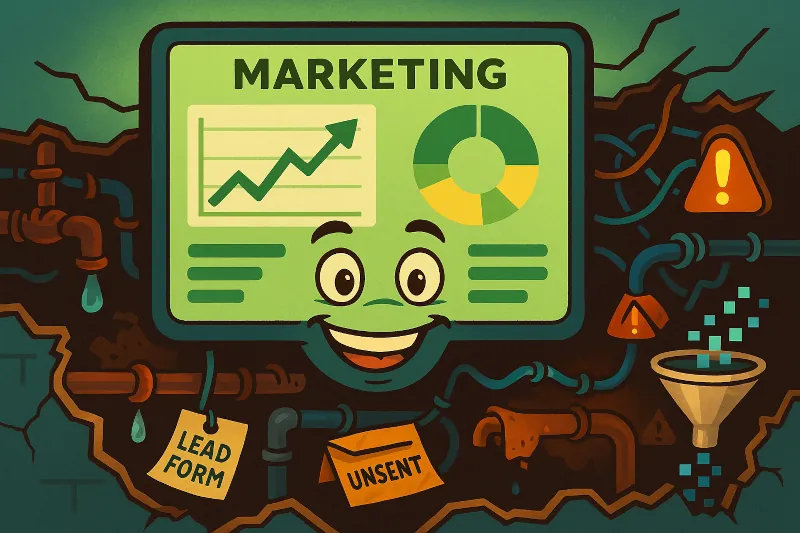
What clients see (and what they don’t)
From their side, it feels simple:
They spent money on ads → Sales didn’t come in → So it must be the ads.
Most clients never look past the opt-in. They don’t know what happens after someone fills out the form — and honestly, they shouldn’t have to.
But that’s why the blame ends up at your door.
You’re the part they can see.
Even if the real problem is hiding just out of view.
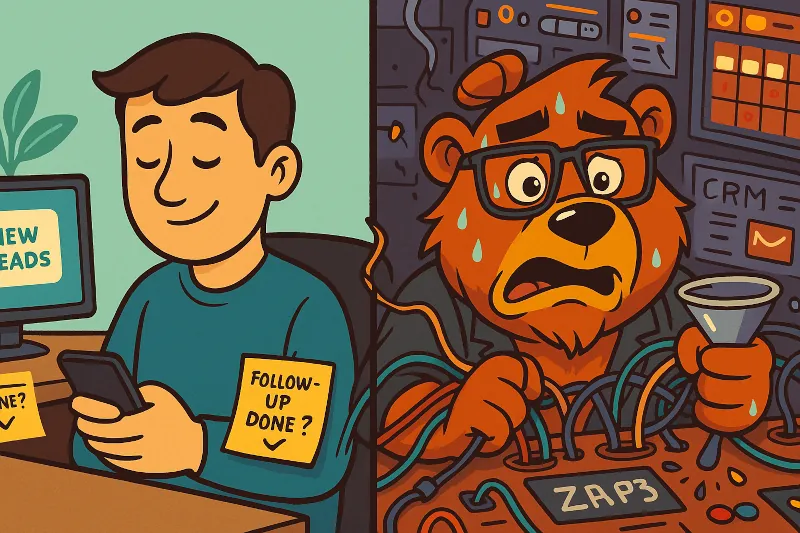
What’s actually happening behind the curtain
That lead who clicked your ad?
They land on a slow, slightly off-brand landing page — something your client built with whatever tool they could figure out on a Tuesday night.
But the lead fills it out anyway.
Then… nothing.
No thank-you. No next step. Just digital silence.
Their info drops into a spreadsheet — or a tool nobody checks until the end of the week.
By the time your client follows up, the lead’s cooled off or gone entirely.
And here’s the hard part:
None of that is your fault.
But every missed moment makes your work look like it didn’t land.
Worse? You probably can’t even fix it.
Because you’re running ads on top of a backend you didn’t build — and that nobody’s really managing.
- Disconnected tools.
- Half-finished automations.
- Manual tasks that quietly fall through the cracks.
That’s where good performance goes fuzzy.
Not in the ad itself — but in everything orbiting it.
Until that gap closes, even your strongest campaigns are going to look suspect.
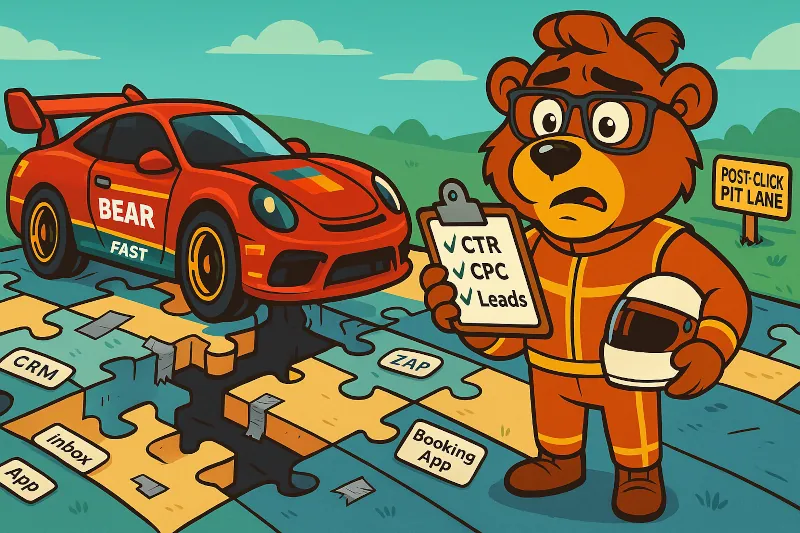
Why your best work still feels like a mess
You launch a campaign you’re proud of.
Sharp ads. Clear plan. Everything’s pointing in the right direction.
But something still doesn’t sit right.
Because “client work” doesn’t stop at the campaign anymore.
It means:
- Troubleshooting tools you didn’t set up.
- Fielding questions about problems you didn’t create.
- Piecing together parts that were never designed to fit.
The results might be strong.
But it still feels like a mess.
Why?
Because everything’s scattered.
- The form lives in one place.
- The calendar’s in another.
- The inbox is a mystery.
- The CRM? Barely touched.
- The automations? Doing something — but no one’s quite sure what.
Meanwhile, your email’s filling up with confused messages from clients wondering why things aren’t “working.”
So you step in. You try to keep it running.
But here’s the real cost:
You spend hours chasing leads
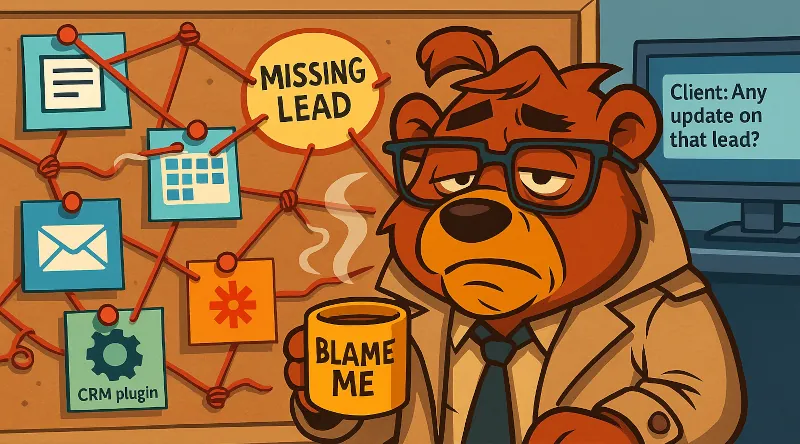
What changed when we stopped stitching it all together
One doesn’t simply move to HighLevel because it is trendy.
We moved because we’d reached our limit.
Blamed for issues we couldn’t see.
Jumping between five tabs just to answer a simple client question.
Staying up late, holding it all together by force of habit and sheer effort.
And eventually, no matter how cleverly we patched things up… it just stopped being worth it.
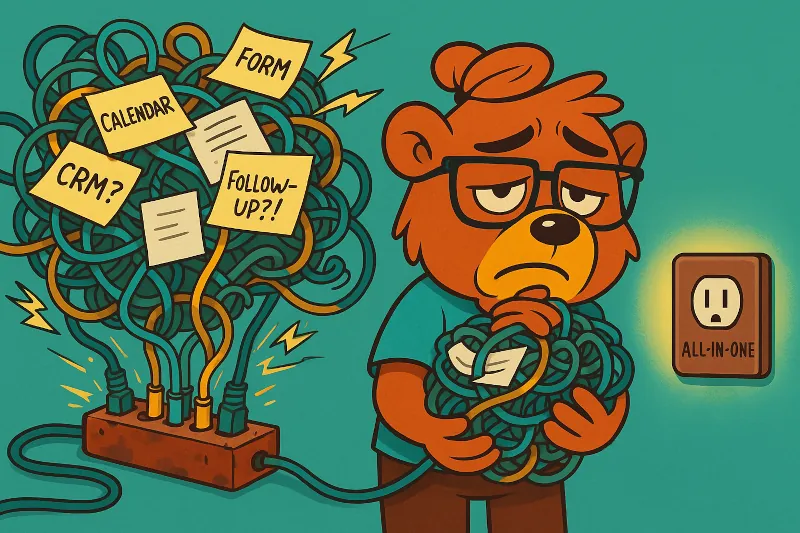
From scattered to one place
There wasn’t some dramatic crash.
No angry client or emergency Zoom call.
Just one too many leads lost in a tool nobody checked.
And too many follow-ups that quietly failed.
Not to mention the awkward moments trying to explain why things looked broken — even when they weren’t.
So we made a decision:
We stopped patching. And we moved everything — landing pages, forms, follow-ups, bookings, conversations — into one place.
All under one roof: one login that showed us what mattered.
That shift didn’t just simplify our tools — it reshaped how we worked.
We stopped reacting and started designing with purpose. For the first time, we had full visibility into the journey we were building.
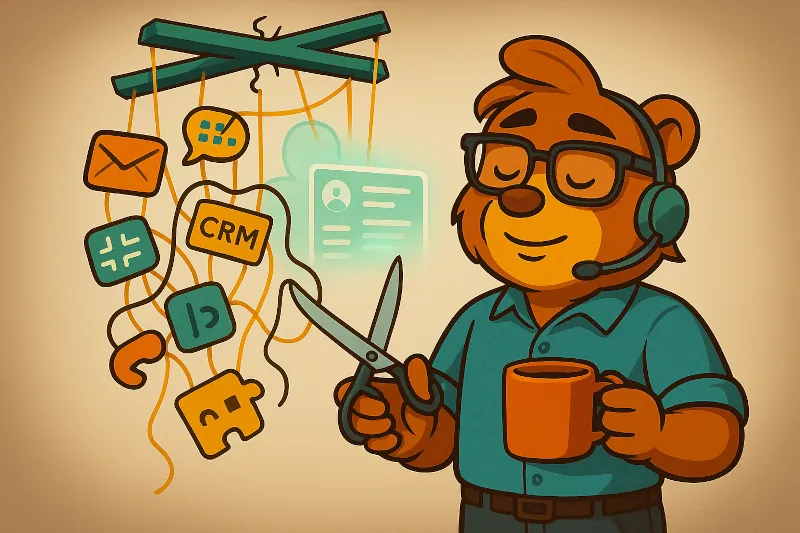
What we noticed almost immediately
The first thing we felt was relief — and our clients felt it too.
Things started working more smoothly.
They didn’t need multiple logins and weren’t sending screenshots or chasing updates.
They could see the system functioning without needing a walkthrough.
Internally, we picked up speed. Delegation got simpler. We cleaned things up.
Even reporting stopped feeling like detective work.
And maybe most importantly?
We could finally speak with certainty again.
Not “we hope this works.”
But: “We know what’s happening — and here’s what we’re adjusting.”
We could see the whole path — and actually shape it.
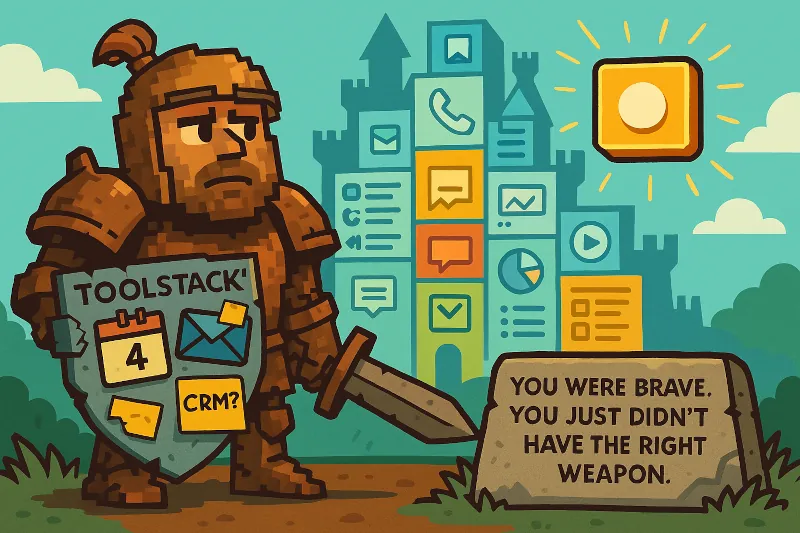
You don’t need more effort — you need ownership
If there’s one thing agency owners aren’t short on, it’s effort.
You’ve stayed up late writing follow-ups.
Waited on hold with a tool you didn’t even choose.
Explained — again — that the ads are working, even if the rest isn’t.
It’s not a lack of effort. It’s a lack of visibility.
But here’s the thing:
The more disconnected everything is, the harder it is to keep up — and the easier it is to feel like you’re falling short.
And that wears you down.
Here’s what shifted for us:
We didn’t double our output.
We took back control.
Instead of trying to manage what we couldn’t see, we started owning the parts that shape results:
- How leads are captured
- What happens after a click
- How the full client experience gets delivered, tracked, and improved
That ownership made the difference.
Because when you guide the whole journey — not just your part of it — things change.
You make smarter decisions and lead from a place of confidence, not cleanup.
It doesn’t have to be perfect.
But it should be yours to shape — not something you’re always scrambling to explain.
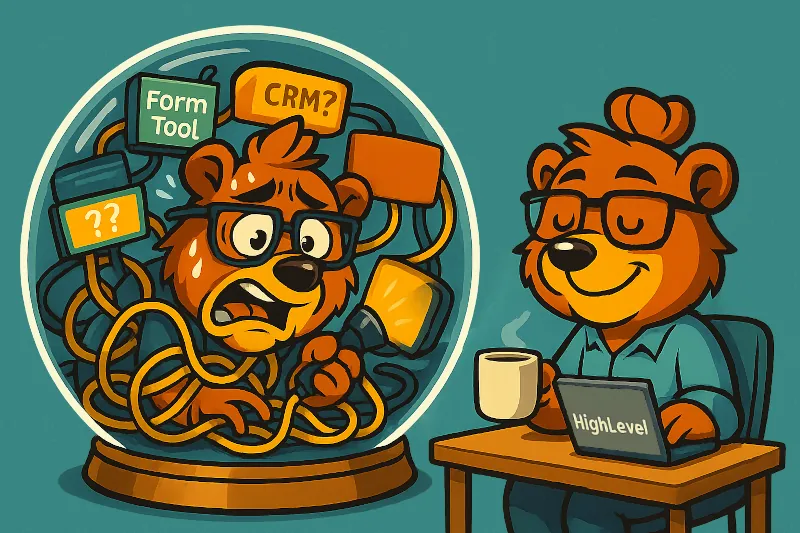
See the difference yourself
If any of this hit home — the tool overwhelm, the second-guessing, the pressure to hold it all together — maybe it’s time to try something different.
Not louder ads, more check-ins, or another bandaid plugin.
A system that brings everything into focus.
That’s what HighLevel became for us — and for other agency owners who got tired of working around someone else’s setup.
It’s not about chasing the next hot tool.
It’s about building in a way where:
- You can guide the full journey.
- You catch gaps before they become problems.
- Your clients understand what’s happening — without needing a walkthrough.
- You focus on strategy, not support tickets.
The best way to know if it fits?
Try it with a real client.
See what it’s like when the tech supports you — instead of distracting you.
👉 Start your 14-day trial here
We’ll walk you through the setup, one step at a time.
Because clarity shouldn’t be rare.
It should be how you work.

